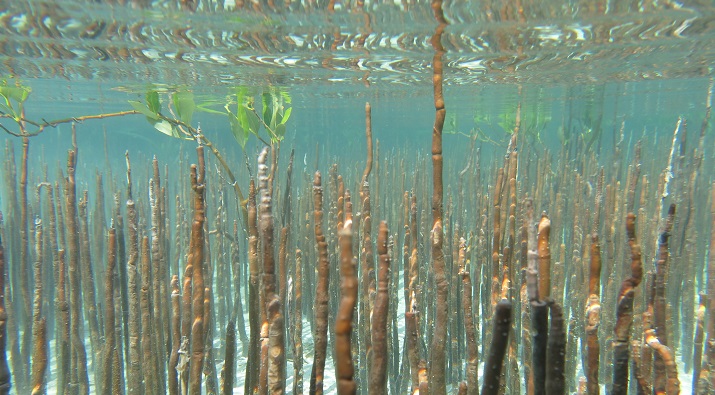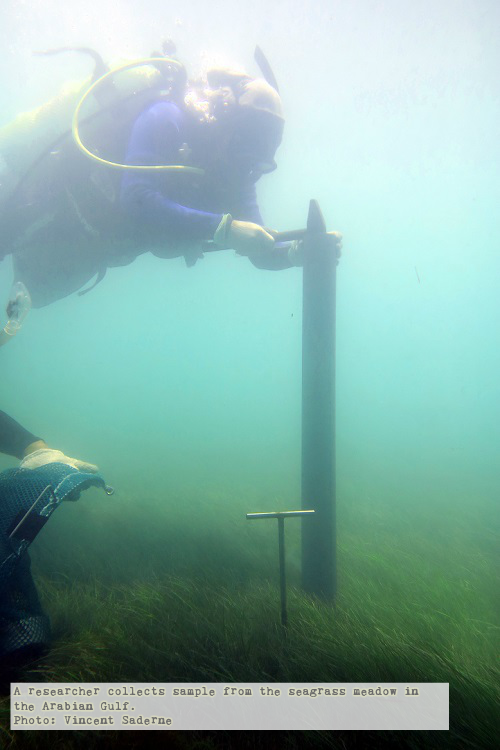

15 July, 2018

 Soil accumulation in coastal ecosystems could mitigate rising sea levels around the Arabian Peninsula, according to new research from KAUST. However, this mitigation will require efforts to preserve and restore these
ecosystems.
Soil accumulation in coastal ecosystems could mitigate rising sea levels around the Arabian Peninsula, according to new research from KAUST. However, this mitigation will require efforts to preserve and restore these
ecosystems.
Human-driven climate change is raising sea levels around the world at increasing rates, threatening hundreds of millions of people living in coastal areas. Researchers at KAUST’s Red Sea Research Center worked with colleagues at the King Fahd University of Petroleum and Minerals to determine whether this increase could be mitigated by soil accretion in coastal ecosystems.
In a project supported by Saudi Aramco, they collected 52 core samples from mangroves, seagrass meadows and tidal marshes along the Red Sea and the Arabian Gulf coasts of Saudi Arabia. Using lead and carbon isotope analyses of the cores, the researchers established chronologies to estimate rates of short-term and long-term soil accumulation in these ecosystems.
At the Red Sea sites, short-term soil accumulation rates outstripped sea-level rise. However, on the Arabian Gulf coast, only mangroves accumulated soil quickly enough to counter sea-level rise, which outpaced soil accumulation at the seagrass and tidal marsh sites. In general, the long-term accumulation rates were lower but similar to the rise in sea level.
Overall, the analysis indicates that soil accumulation and sea-level rise along the Saudi coast have kept pace over the long term, but recent anthropogenic shifts have mada-level rise faster in some ecosystems.
At the Red Sea sites, short-term soil accumulation rates outstripped sea-level rise. However, on the Arabian Gulf coast, only mangroves accumulated soil quickly enough to counter sea-level rise, which outpaced soil accumulation at the seagrass and tidal marsh sites. In general, the long-term accumulation rates were lower but similar to the rise in sea level.
Overall, the analysis indicates that soil accumulation and sea-level rise along the Saudi coast have kept pace over the long term, but recent anthropogenic shifts have made sea-level rise faster in some ecosystems.
 The team also measured the calcium carbonate concentration along the cores and found that soil accumulation at the sites consisted largely of carbonate accretion. These ecosystems have been called blue carbon ecosystems because they can
trap atmospheric CO2 in the sediment. However, calcium carbonate production through calcification generates CO2, leading to a debate about whether the ecosystems act as net carbon sinks or sources.
The team also measured the calcium carbonate concentration along the cores and found that soil accumulation at the sites consisted largely of carbonate accretion. These ecosystems have been called blue carbon ecosystems because they can
trap atmospheric CO2 in the sediment. However, calcium carbonate production through calcification generates CO2, leading to a debate about whether the ecosystems act as net carbon sinks or sources.
The authors believe that most of the carbonate comes from nearby coral reefs rather than local calcification. “It’s improbable that the few calcifiers in the seagrass of the Arabian Peninsula could produce so much sediment,” says Vincent Saderne, the study’s lead author. “The sediment comes from outside and accumulates in these ecosystems,” and so serves as a carbon sink.
Overall, the findings highlight the importance of considering these ecosystems in planning urban and industrial development. “If we don't stop destroying mangroves, seafront properties will become underwater properties,” says Saderne. “Mangroves aren’t just mosquito houses; they protect the cities and the shore from sea-level rise.”